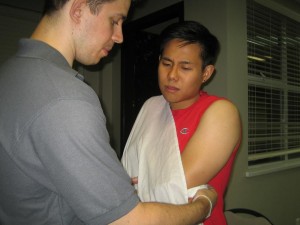Los Angeles CPR is a training provider known for high-quality CPR programs offered at very affordable rates. We have a selection of basic and advanced training available, with varying program lengths. You can enroll in our training programs through the internet, over the telephone, or in person. Our website has a list of all available programs as well as their available schedules.
Heart failure, cardiac arrest, and CPR

When a person is diagnosed with heart failure, mortality rates are pretty high. Almost half of people diagnosed die within the first five years after diagnosis. When a person has heart failure, that doesn’t mean that the heart has zero function. It simply means that the heart cannot pump adequately to support the needs of the body, with the person often needing supportive devices such as pacemakers and LVADs to function normally.
What are the risk factors for developing heart failure?
The risk factors for heart failure are the same risk factors for developing heart disease: unhealthy lifestyle and their resulting complications.
- A diet high in bad cholesterol or LDL makes a person susceptible to coronary artery disease (CAD). In CAD, blood vessels, particularly those surrounding the heart get blocked with fatty deposits called plaque. Two things can happen, either the vessel gets completely blocked or gets damaged, causing a bleed. Physical inactivty further aggravates this condition.
- Hypertension is also a result of unhealthy lifestyle choices. A diet high in fat, cholesterol, and sodium can cause an increase in blood pressure, due to both plaque buildup and water retention (because of sodium).
- Vices, particularly smoking, can also predispose a person to CAD. Nicotine is a carcinogen that damages blood vessel walls, making them susceptible to plaque buildup.
What can CPR do?
Basic CPR is a series of steps that can be done by bystanders if they have proper training. It is meant to stabilize the victim or at least begin management before the arrival of emergency medical technicians (EMTs). According to studies, immediately giving CPR, even just chest compressions, can improve patient outcomes by as much as 50 percent.
Basic CPR training in Los Angels
Basic CPR covers the skills used in giving compressions and ventilation. First aid is also included in all the basic programs, along with teaching the students about common risk factors and lifestyle changes to avoid them. If you enroll in a program with us, you will learn how to save a person’s life and get a training certificate while you’re at it.
- Heartsaver CPR – general public, 4 hours
- Heartsaver CPR C – HCPs, 4.5 hours
- Basic Life Support for HCPs – 4.5 hours
Advanced CPR training
Our advanced CPR programs are only for healthcare providers, and even then, there are still a few requirements that they need to fulfill. Advanced courses cover a number of topics that focus on medical management in an organized, health care set-up.
- Advanced Cardiac Life Support (ACLS) – 16 hours
- Pediatric Advanced Life Support – 14 hours
